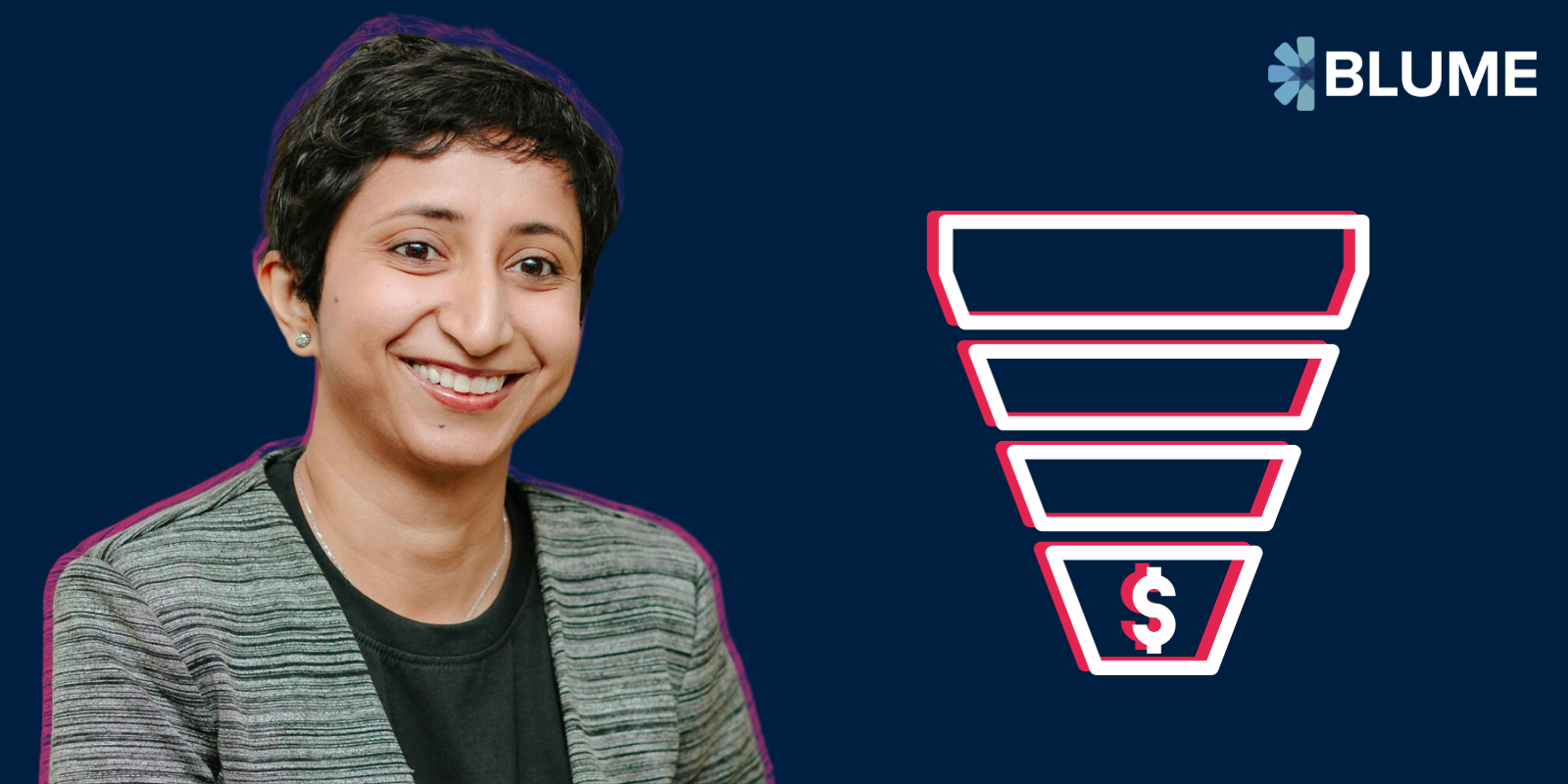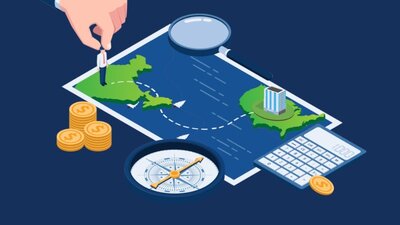Shruti: “When you are starting up, particularly from a B2B perspective, you're essentially striving to persuade someone within a business to take a bet on you as a founder. Regardless of your product or the caliber of your tech team, there will be product failures. Hence, someone needs to be willing to stake their reputation to collaborate with you. Often, people overlook that it's not about whether you charge them $100, $1,000, or $10,000. The real cost for them is not the money, but rather, risking their reputation and potentially their career for your product.”
I recently spoke to Shruti Kapoor, founder of Wingman (acquired by Clari) and currently the head of International Business at Clari. In this write-up, I distill her insights into close-to-metal actionable insights on how early-stage founders can build a pipeline that converts.
Shruti started Wingman in 2018. Wingman analyzes the data from interactions between salespeople and buyers to enhance sales processes, relay customer insights to the organization, and provide real-time feedback to salespeople during calls. Wingman was acquired by Clari in 2022, a revenue platform to improve revenue forecasting accuracy.
Here’s a glimpse of what you can expect as you read along:
- At an early stage, building a pipeline is about finding ways to signal trust
- When is inbound a good GTM channel, and when it is not
- Deconstructing BANT to understand the importance of Need and Authority
- Reducing the marketing-sales friction in your pipeline
- How to hire your first VP of sales
At an early stage, building a pipeline is about finding ways to signal trust
Shruti shares an interesting mental model that I haven’t heard earlier, at least not in these words. She says that at an early stage, your pipeline depends on how well you can build trust with your buyers. This is because the real cost for the buyer is not the price of your product but much more.
Shruti: “When you are starting up, particularly from a B2B perspective, you're essentially striving to persuade someone within a business to take a bet on you as a founder. Regardless of your product or the caliber of your tech team, there will be product failures. Hence, someone needs to be willing to stake their reputation to collaborate with you. Often, people overlook that it's not about whether you charge them $100, $1,000, or $10,000. The real cost for them is not the money, but rather, risking their reputation and potentially their career for your product.”
To mitigate this psychological risk, your buyer needs to trust you - not your brand, not your product, but you as a person. There are many signals that you can use to build trust, even if your product is early and unknown.
- They know who you are - You are their friend or ex-colleague.
- They know whom you know - You are their friend’s friend.
- They like how you show up - Do you come across as professional, persistent, and committed? Or you show up in your t-shirt and shorts, 10 minutes late for your meeting, and then ask them to give your product a chance.
- They like what you do - How you react to their feedback, provide updates, and answer questions/objections.
- They like what do you know - Are you an expert? Have you done your research? Can you tell them something insightful about their industry that they don't know?
In a way, super early on, your network is your best bet to evangelize your product. Not having a network in an industry where you want to sell will make the early sales a bit tougher and sales cycles longer.
And then, as you scale, your pipeline will scale only if you can find more levers to build trust. Here are some ways to manifest trust at scale.
Shruti: “Having customer testimonials, referencable customers, and sales collaterals that discuss the ROI and benefits derived from your product are valuable. And then you can take it to slightly more, I would like to call maybe anonymized channels or distant from the founders' identity.”
Inbound's fitment for your GTM depends on your category's maturity
As per Shruti, Inbound has a higher fitment with SMB and mid-market GTM. But even then, founders should consider how mature is their product category before doubling down.
Shruti: “But even within inbound, people should be very clear in terms of the maturity of their product category - are people searching at all, and if they are, are they searching for a problem or for a solution?”
You should think of your category as a three-stage progression:
- People do not know they have a problem
- People know they have a problem (sample search: how do I store my customer data securely?)
- People know the problem and solution (sample search: is Hubspot cheaper than Salesforce)
Your position on this trajectory determines how well your inbound strategy will work.
For instance, in a category with a recognized problem and solution, the keyword search volume is most likely high. Think of the CRM category and people searching for ‘Cheapest CRM for SMB.’ So you can get a quick start with paid Search Engine Marketing through Google ads, and once you have some traction, you can build content and SEO.
However, if your customers are in a less mature category, your inbound GTM should be different.
Shruti: “If they are aware of the problem, but not aware of the solution and you do paid marketing, it will become very expensive. In such cases, you need to start with content, organic reach, and thought leadership. However, if they are not aware that they have a problem or the keyword search volume for both problem and solution is low, then you’ll need to educate the market about the problem first. You will need to start with outbound here as no amount of content will create that level of awareness.”
Deconstructing BANT - Need is the most fundamental signal
BANT stands for "Budget, Authority, Need, Timing," a framework often used in B2B SaaS sales situations to qualify prospects. SaaS sellers typically evaluate to what degree a sales prospect meets each of the four criteria before moving them downstream.
However, each of these 4 dimensions is not equally weighted. Shruti believes that need is the most important signal, and everything else follows it.
Shruti: “We conducted an analysis of all the sales calls across all our customers. What we observed was that many people mentioned budget and timeline as obstacles to making a purchase. Ultimately, it wasn't really about budget. You might not have a budget today, but you're likely to create one given enough time and if I demonstrate that this is a viable solution for you. So, I view budget as something a bit more flexible, and it's more about whether you've demonstrated sufficient ROI to the prospect in the buying process.”
Another interesting point Shruti makes for early-stage founders is just because someone has the budget doesn’t mean you should sell to them. Sounds counter-intuitive?
Shruti: “I think there is an even more stringent aspect to buyer qualification when they believe the need is present, but the profile of their company, for various reasons, doesn't align with the profile of your ICP. This becomes especially relevant in inbound because if their profile is not suitable and they’ll either distract your product team as their requirements will end up being different, or they will end up being unhappy customers because their needs will not be met by your product.”
What you need to ask yourself - Your prospect may believe that your product solves for their need, but do you believe that your product solves for their need?
It is never too early in your sales journey to figure out the authority matrix and multi-thread
Shruti: “I think another aspect that people don't acknowledge enough is the importance of having multiple stakeholders in enterprise deals. It's often discussed, "We had 50 leads, and then we did all these demos, and we only converted 8% in the end. So what happened? What can we do differently?" The issue is not about having these stages, such as need analysis, demo, and so forth. The problem is that you're not engaging with all of the stakeholders.”
If you are not figuring out the Authority matrix on day 1, then you are late. Often, founders/account executives do not understand the roles of different stakeholders in an account till it is too late. Someone may have the authority to evaluate a product and pick the best one, but someone else will have the authority to sign the check.
Shruti: “In my scenario, perhaps the RevOps individual or the sales operations person is going to evaluate the product. The VP of sales, or the CRO, is designated as the decision-maker. However, whether or not the product ultimately gets purchased, especially in today's environment, is going to be the CFO's decision. So, now you have to align all three individuals because if any one of them says no, the deal falls through.”
Your POC in the account is often the starting point for figuring out different players in the authority matrix. Then, you have to ensure that you have the right information about your product flowing to them early on. There are multi-million dollar contracts where the leadership signs the contract without ever doing a demo because they see that you have spoken to enough people in their organization and you understand what their problem is.
Here are some actionable pointers from Shruti on multi-threading during the sales process:
Shruti: “At the end of that first call with your POC, spend time mapping out who the stakeholders are. And then getting connected. And what I’ve seen is, if you’re trying to get connects early on, you would actually ask your champion, or your initial POC, to connect you with the Executive Assistants (EAs) of those people. Then you do all the scheduling with those EAs and get time on their calendars. And build your case with each of them separately.”
When it comes to champions, Shruti believes that you shouldn’t default to the first person from the org who reached out to you or your current POC in the org. Instead, you should qualify them, keeping in mind if they are the right champion for this deal.
Shruti: “Some subtle questions to ask are, Hey, what was the last product that this particular team bought? What did the procurement process for that look like? Who else do you think needs to get involved in that process?”
Reduce the marketing-sales friction in your pipeline before you scale it
Shruti suggests a few things to keep in mind as you scale your pipeline to reduce sales and marketing friction.
Firstly, ensure sales and marketing agree on common definitions across the sales funnel - from Leads to Marketing Qualified Leads (MQLs) to Sales Accepted Leads (SALs), to Opportunities, and finally to Deals. Have this discussion upfront, even if it causes some friction, as it will save you from many heated discussions later.
Shruti: “I think it's important to adopt more of a sales-accepted pipeline approach. This forces the SDR, marketing, and AE to collaborate closely and ascertain, "Are we agreeing on the same definitions?"
Secondly, track your SALs carefully. SALs are often overlooked, which can lead to disconnects between sales and marketing teams. The transition from MQL to Opportunity without acknowledging SALs could result in blame games when conversion rates falter.
Shruti: “Suppose your MQL to Opportunities conversion is 20%; marketing will attribute it to inadequate follow-ups or poor sales processes. Sales will point to poor lead quality, and it will be too late to rectify things since the duration between MQL to Opportunity creation might be 30+ days, and reviving those MQLs is no longer feasible.”
SALs provide a time-bound framework, stipulating a time frame within which an MQL must be either accepted as a SAL or disqualified by the sales team.
Thirdly, different pipeline sources convert at different velocities. You should differentiate leads on how strong is their intent to buy - such as filling out a demo form on your website, watching a webinar, or downloading a case study.
Shruti: “You should define different conversion rates and distinct flows for different channels. You wouldn't want a webinar lead to receive five calls from your SDR the next day saying, "Okay, now I'm ready to set up a demo for you." Conversely, you also wouldn't want a situation where someone who has requested a demo gets placed into a five-email flow, and doesn't hear back from a salesperson for the next week. Thus, I believe both the journey and the conversion rates should be defined separately.”
This means that you need to normalize that, say, 30% of the bottom-of-the-funnel leads are going to your S1 vs., say, only 10% of the content-based leads. Often, what happens is that marketing is under pressure to send MQLs to sales and transfers the pipeline too early to sales. But the sales team is looking at something that they can close this quarter or maybe the next quarter. When they follow up with a pre-mature lead aggressively only to hear that ‘they were curious about the webinar and are not looking to buy,’ sales will lose interest and tag them as a disqualified lead. This lead is now lost, even though they may surface in the buying cycle after watching 5 to 6 webinars, and the marketing investment comes down to naught.
So, you’re better off both from your buyer’s experience and from the marketing outcome experience to ensure you are careful about when to push MQLs to sales rather than prematurely handing them to sales.
Shruti: “Okay, we had 100 webinar leads, now, what do we do? Let’s get our sales team to start calling them tomorrow. It always backfires.”
Lastly, what often goes unnoticed, particularly in many Indian SaaS companies, is the extent to which the pipeline in the US is developed by AEs themselves. Typically, around 20% of your pipeline will be cultivated by your account executives. Additionally, there are arrangements like SDR-AE pairings or pods. In certain scenarios, if the SDRs are embedded within your sales team, they might contribute to a significantly larger portion of your pipeline.
Outbound is the GTM channel when selling to enterprise
Shruti unequivocally reiterates what I have learned in my past conversations - if you are selling to enterprise customers in the US, outbound is the way to go. She does throw in a word or two of caution.
Early-stage founders should know that outbound has a high drop-off rate as trust is low and the need is not fully qualified. You may be reaching out to somebody who is not in the buying cycle and is not actively evaluating. You’ll need to account for this low conversion rate when coming up with your pipeline coverage ratio - how many dollars of pipeline you need to generate to close $1 of ARR.
Doing qualification upfront helps in weeding out non-ICP accounts.
Shruti: “So you could assess the suitability of your solution based on what is the size of the company, the profile of the buying team, some of their intent signals, etc.”
Contrary to what some people believe, Shruti says that outbound’s importance doesn’t reduce as you scale, and it remains a dominant channel.
Shruti: “I think that channel doesn’t change as the company scales. What occurs is that while you'll have one dominant channel, you'll start to explore multiple channels. Events or inbound strategies might contribute an additional 5%, 10%, or 20% to your pipeline. Your dominant channel is unlikely to change overnight unless there's a fundamental shift in your product or market.”
How to hire your first VP of sales
Shruti says that there’s no silver bullet to knowing when to hire a VP of sales. It depends on where you are in your journey of transitioning from founder-led sales to process-driven sales.
Shruti: “If you hire your VP of sales early in your journey, it implies that you'll expect the VP to take over from you and sell themselves. The challenge here tends to be that as you begin to expand the sales team, the VP of Sales may unconsciously end up competing with their own sales representatives. This can manifest in confusing ways. For instance, the large accounts go to the VP of Sales, the best accounts go to the VP of Sales. Consequently, your sales reps may harbor a lot of discontent, feeling that they are not being treated fairly.”
On the flip side, you can look at your VP of Sales as a coach. You bring in some AEs first, and once they start hitting a certain cadence with their quota, then you get a VP of sales to scale the sales machine. However, this also means that you’ll need to hire senior AEs (who could be expensive and difficult to find), as junior AEs will struggle without a VP who can coach them.
Another question many SaaS founders grapple with is, if the US is their main market, should they hire their VP of sales in the US? While the answer may seem straightforward (hire them in the US, duh!), Shruti believes that there’s nuance in this.
Shruti: If your ambitions in the short-to-midterm are to sell to SMBs and perhaps at the lower end of the mid-market, you should even question the need to hire a VP of Sales in the US. Perhaps for that segment, you could run it entirely out of India.”
Even if you aspire to sell to the enterprise segment eventually, you can hire a senior enterprise AE in the US who tag teams with your VP of sales and sales team in India.
Shruti shares a word of caution here - if you are running a cross-cultural sales team (some people in the US and some in India), you should hire someone who has experience working in a cross-cultural team. Unlike developers, where you can find plenty of people of Indian origin in the US, who understand the Indian culture, you’ll hardly find any Indian/Indian-origin salespeople in B2B tech sales in the US. To solve for this and set the right cultural expectations across the board, once you hire them, get them to India for a 2 weeks immersion trip - have them spend time with the sales, marketing, product, and other teams and build a rapport with them.
In case the bulk of your sales team is based in India, then you should consider getting them to the US for 2 weeks for a similar immersion trip. No amount of Zoom calls can replace meeting customers in person. If you’re really looking at this as a long-term play, then the cost of getting somebody to spend two weeks or even a month in the US is much less than hiring locally and pays off over time through higher efficiency of the sales team.











